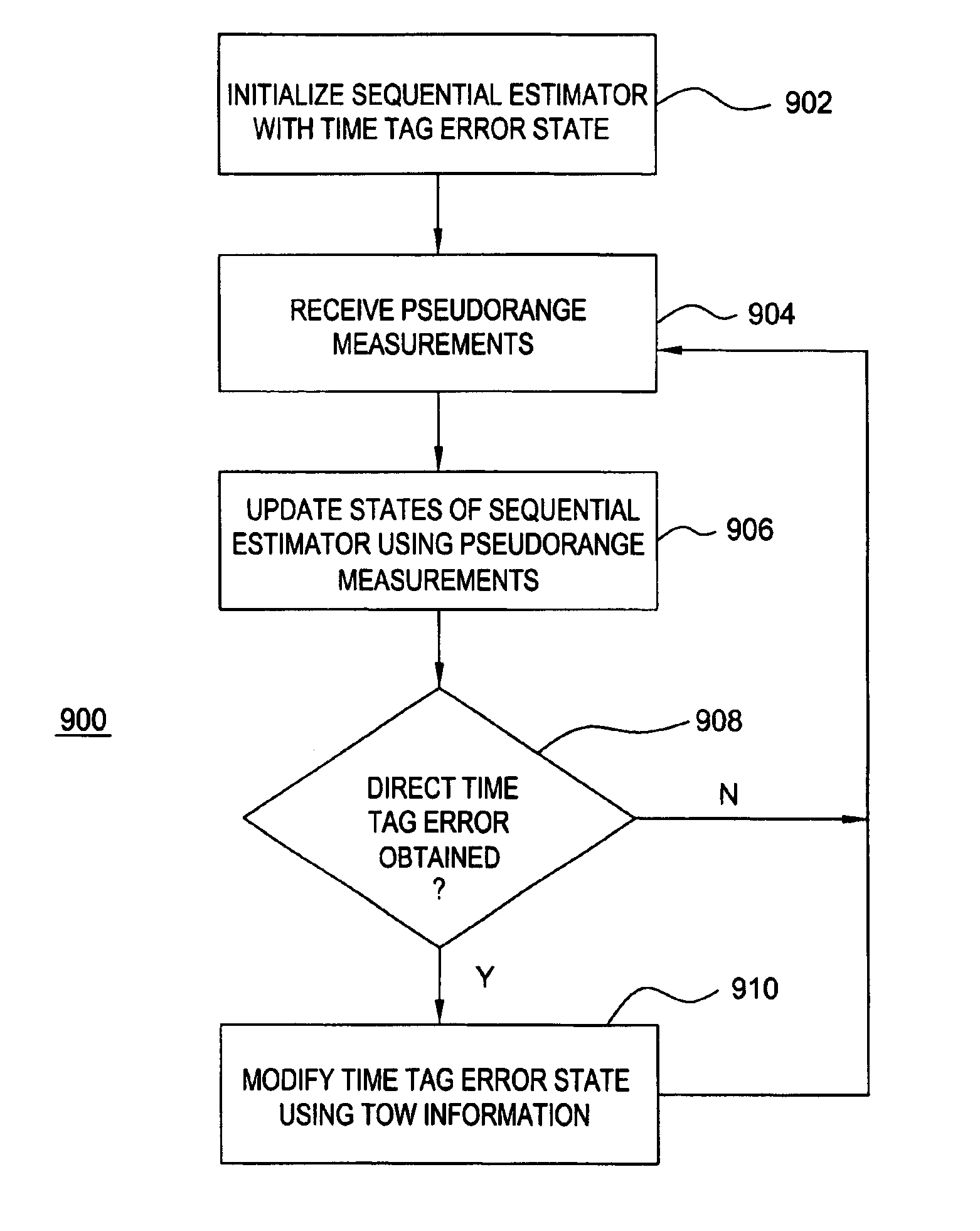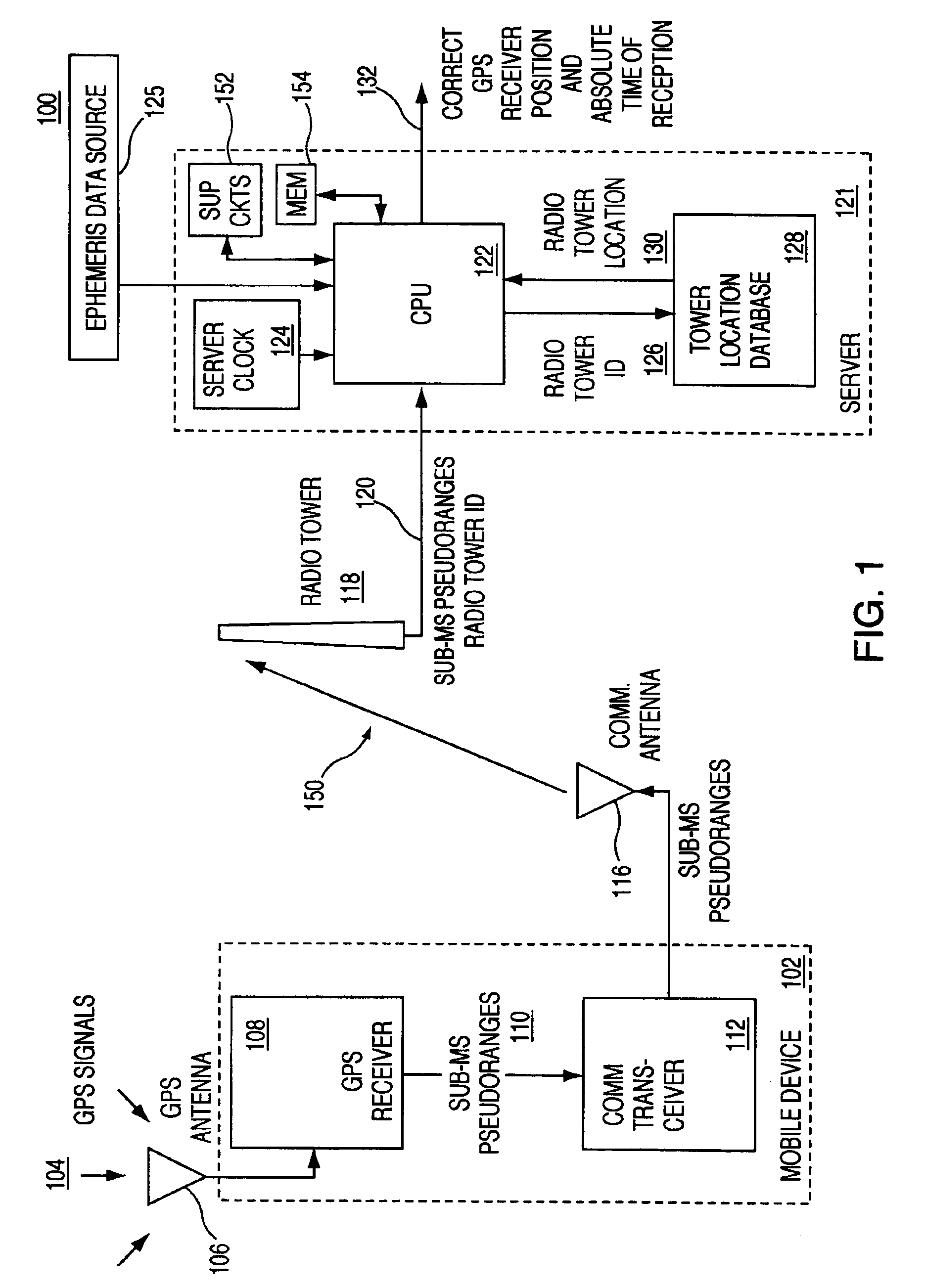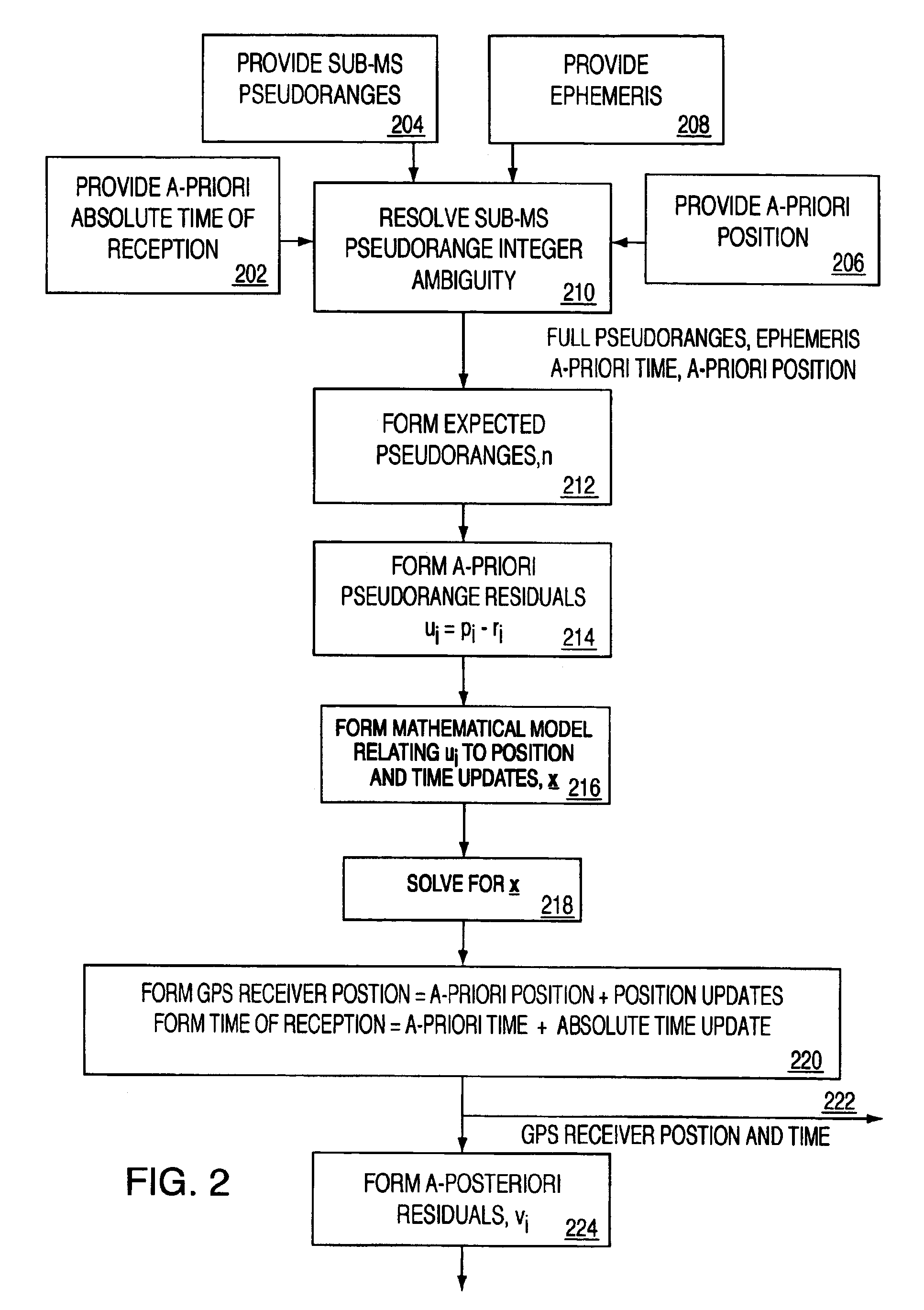Method and apparatus for forming a dynamic model to locate position of a satellite receiver
a dynamic model and satellite receiver technology, applied in surveying and navigation, instruments, navigation instruments, etc., can solve the problems of inability to obtain absolute time to the accuracy of gps receivers, blockage of satellite signals, and inability to introduce unacceptable delays in computing receiver positions
- Summary
- Abstract
- Description
- Claims
- Application Information
AI Technical Summary
Benefits of technology
Problems solved by technology
Method used
Image
Examples
Embodiment Construction
[0034]The invention is a method and apparatus for determining position and time in a global positioning system (GPS) without having access, at the GPS receiver, to absolute time information. In the following description, for purposes of explanation, numerous specific details are set forth in order to provide a thorough understanding of the present invention. It will be evident, however, to one skilled in the art that the present invention may be practiced without these specific details.
[0035]FIG. 1 depicts one embodiment of the present invention comprising an integrated mobile receiver 102 coupled to a server 121 via a wireless link 150. A GPS receiver 108 is contained in the integrated receiver 102 along with a wireless communication transceiver 112. The GPS receiver 108 measures only sub-millisecond pseudoranges with respect to GPS satellites that are in view of the receiver 108, and then sends these sub-millisecond pseudo-ranges to a server 121 using a wireless communication link...
PUM
 Login to View More
Login to View More Abstract
Description
Claims
Application Information
 Login to View More
Login to View More - R&D
- Intellectual Property
- Life Sciences
- Materials
- Tech Scout
- Unparalleled Data Quality
- Higher Quality Content
- 60% Fewer Hallucinations
Browse by: Latest US Patents, China's latest patents, Technical Efficacy Thesaurus, Application Domain, Technology Topic, Popular Technical Reports.
© 2025 PatSnap. All rights reserved.Legal|Privacy policy|Modern Slavery Act Transparency Statement|Sitemap|About US| Contact US: help@patsnap.com



